Pros and cons
Glass facades for the kitchen have many advantages:
- Suitable for small spaces. Doors with transparent or frosted glass look much lighter than the same blind ones, literally expanding the space.
- Fit into any style. Glass facades in a chic wooden frame with gilding can be used in a classic design, kitchens made of glass and metal are the embodiment of the high-tech style, designs without complex decorations suit modern, Scandinavian interiors.
- Act as a showcase. It’s a shame if beautiful holiday dishes gather dust on the mezzanine or in closed cabinets – put them behind glass so that you can admire the aesthetics every day.
- Easy to care for. Unlike a dark glossy or any matte kitchen, glass is easier to clean — use a mirror cleaner or wipe with a regular clean damp cloth.
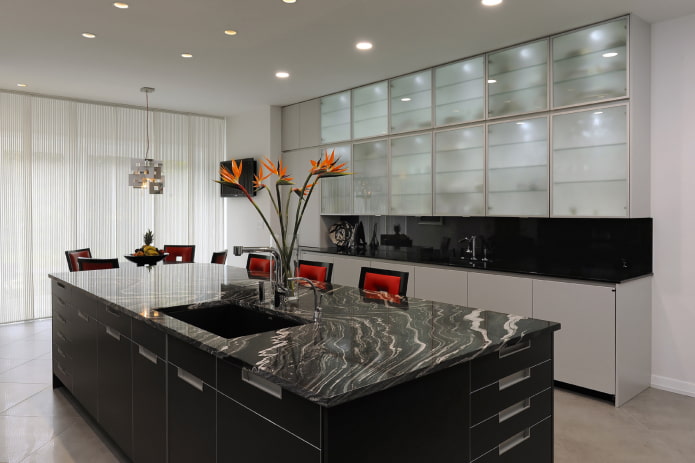
Disadvantages of glass facades for the kitchen:
- They are more expensive than solid MDF. The high cost of the kitchen is a relative concept, but one way or another, the presence of glass facades increases the price of the kitchen set.
- Some glass can break from impact. Fragility is inherent only to ordinary glass, tempered or triplex are not afraid of this.
- They get dirty quickly. Fingerprints, greasy marks and other marks remain on the surface. But, as already mentioned, glass inserts are easy to clean.
- Shows a mess. Glass will reveal what is hidden: therefore, drawers should be tidy and beautiful, otherwise the kitchen will feel cluttered.
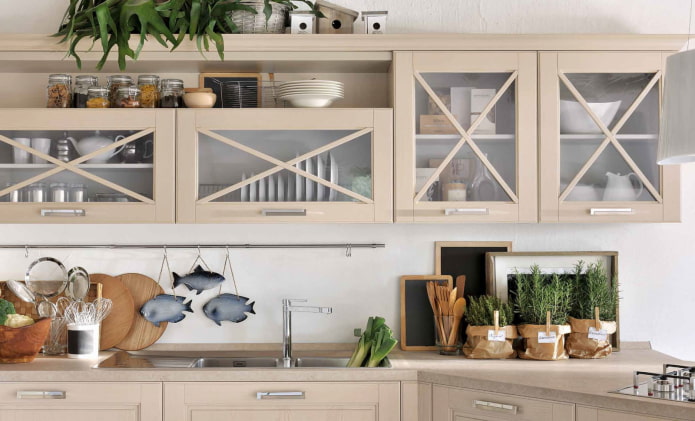
The photo shows frame doors
If, having assessed the advantages and disadvantages, you have decided on transparent kitchen facades, it is time to decide on the type of inserts.
What types are there?
Glasses for kitchen facades differ in appearance, characteristics, price.
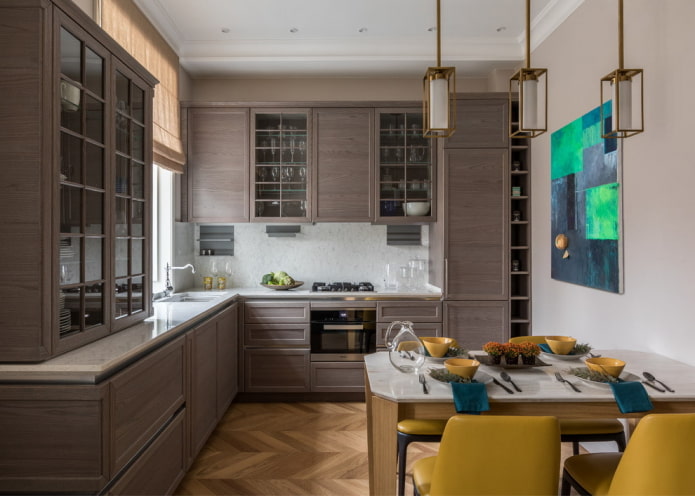
Laminated
The biggest problem with standard silicate glass is its fragility. It breaks easily, and when broken, it shatters into sharp pieces that can cause serious injury.
To avoid such trouble in the kitchen, manufacturers have come up with an interesting solution: the glass is sealed in plastic, or more precisely, a thin film. If such a glass facade breaks, the film will keep the shards from scattering. Lightness and other characteristics are preserved.
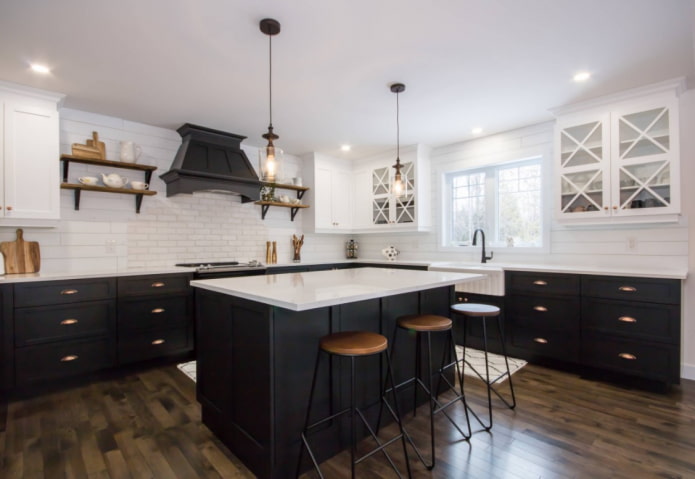
Tempered
The manufacturing technology involves exposure to high temperatures, which changes the characteristics of glass products. Tempering produces resistance to high temperatures and their changes, it is possible to break strong glass, although it is more difficult to do.
Unlike ordinary glass, tempered glass breaks into small particles with rounded edges (another result of processing) – this is safer.
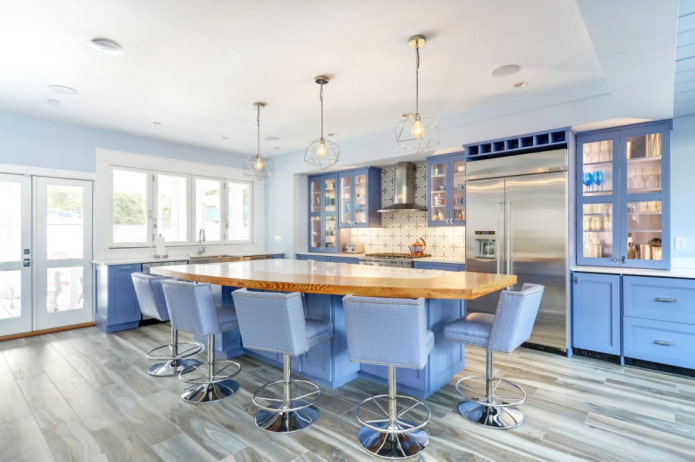
Triplex
Several thin layers are securely glued together with a film, creating a weighty multi-layer material. Thanks to the film, high strength is achieved: it is almost impossible to break the triplex. When hit, the same thing will happen as when a small stone hits a car windshield: a network of cracks will spread from the point of impact.
A high-quality solution is expensive, so its use in glass facades for the kitchen is justified only in frameless designs.

The photo shows tinted glass on cabinets
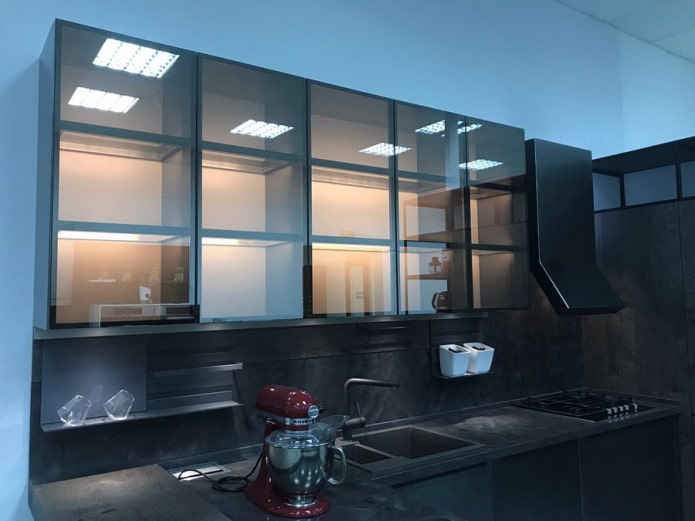
The photo shows frameless facades in black
Acrylic
A modern analogue of glass is extruded or plexiglass, commonly known as acrylic. It looks no worse than regular glass, does not break, weighs less, and does not emit harmful substances.
But there is one big “but” for the kitchen: the maximum temperature that acrylic can withstand is 80C. That is, it is prohibited to use upper modules with inserts over a gas stove, for example. But the furniture above the worktop will last for many years.
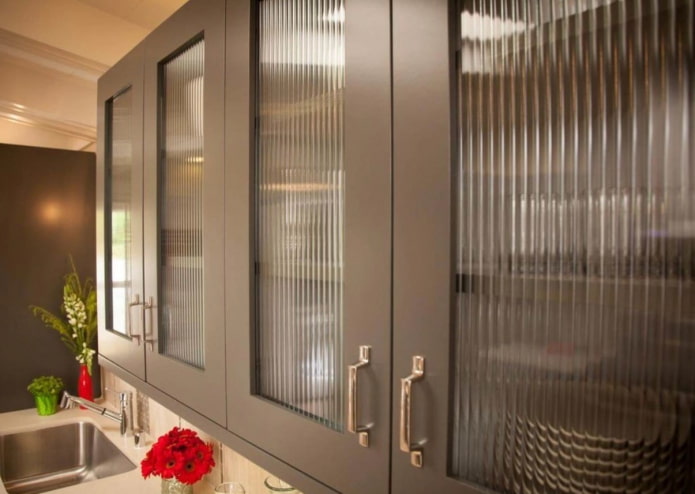
Whichever insert option you choose, it will benefit from appropriate design. There are 2 types of glass facades for the kitchen.
Frame
The frame facades clearly show the usual combination of wood and glass. In fact, the doors look like windows: glass is inserted into a wooden frame, secured with special fittings or an aluminum profile.
This solution is standard and classic for the kitchen. It is chosen for kitchens in the Art Deco, Scandi, Provence, and country styles. It makes no difference what the set is made of: natural wood, painted MDF, film — glass details look appropriate everywhere.
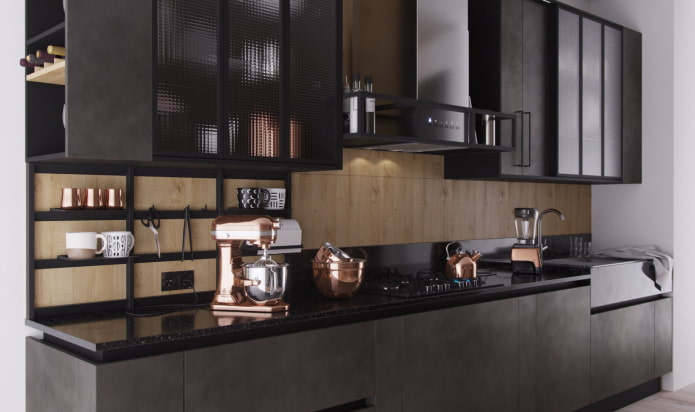
Frameless
As the name suggests, this design has no frame. It is based on dense triplex or thick tempered glass according to the size of the facade, fixed on hinges, equipped with a handle. The entire door is glass. The unusual effect looks weightless, suitable for high-tech, modern, minimalism styles.
Important! Frameless structures are necessarily equipped with fittings with rubber or plastic tips so that nothing can damage or scratch the glass.
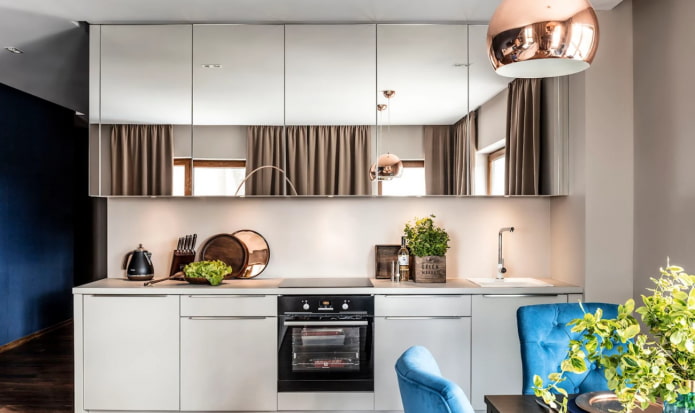
The photo shows mirror facades
How can you decorate the facades?
Do transparent glass pieces in an aluminum profile seem boring? Choose one of the original decor options.
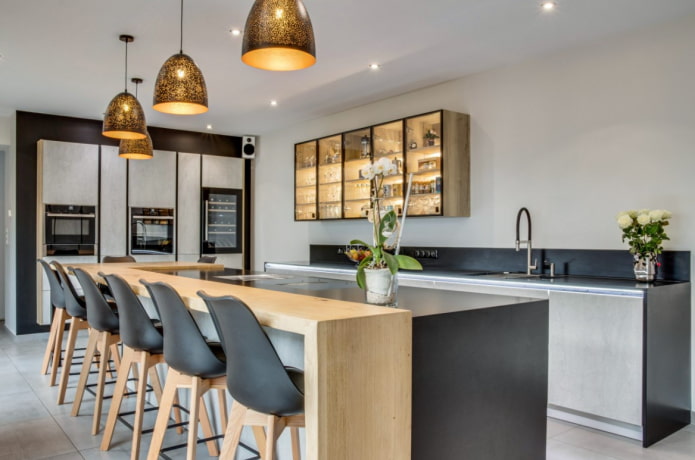
The photo shows the lighting of the upper cabinets
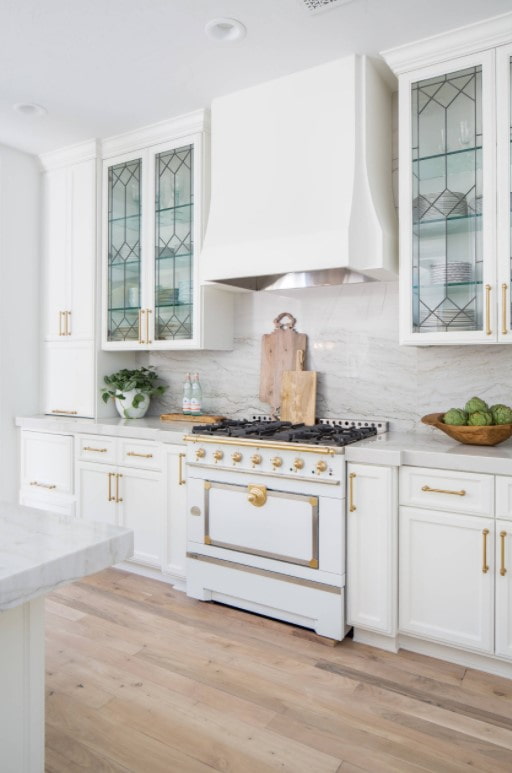
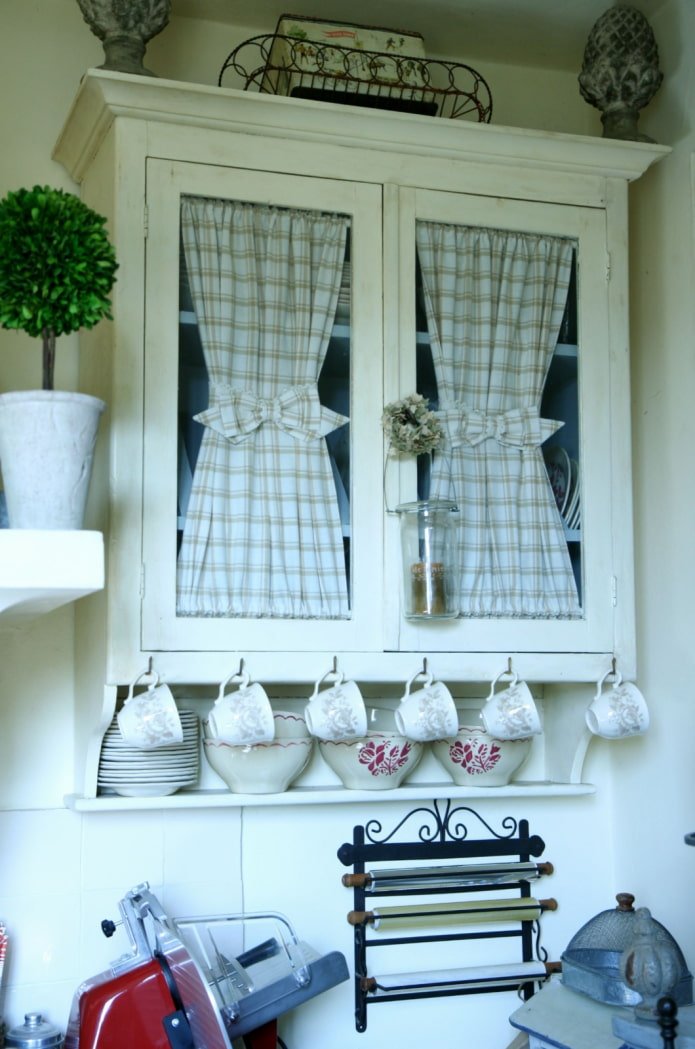
- Color. Yellow, blue, red, green — glass parts of any shade can be made at the factory! To achieve uniform coloring, the necessary pigment is added to the liquid mass. At home, ordinary colored film will help.
- Texture. To allow only the silhouettes of objects inside to be visible, when ordering furniture, specify matte rather than glossy glass elements. There are several matting methods: sandblasting, chemical, temperature, paint and varnish. Only part of it can be matte — the shape or pattern is applied with a special gun.
- Tinting. Another way to preserve airiness, but hide the insides of the drawers. Gray, black or mirror film is easy to stick on your own.
- Relief. Waves, lattice, crises, fluxes, delta, screen and other textures also blur the contents of the cabinets, but retain the lightness of the structure.
- Stained glass. Previously, the image was assembled from pieces, like a puzzle. Today, instead of an expensive original, you can order a high-quality imitation – a drawing with stained glass paints.
- Photo printing. Any motif can be printed on the surface! The service is not cheap, but as a result you will get a unique design that does not fade in the sun and is not afraid of water. The main thing when choosing a design is to realize that it is for a long time: otherwise, if in a couple of years the motifs go out of fashion, the facades will have to be changed.
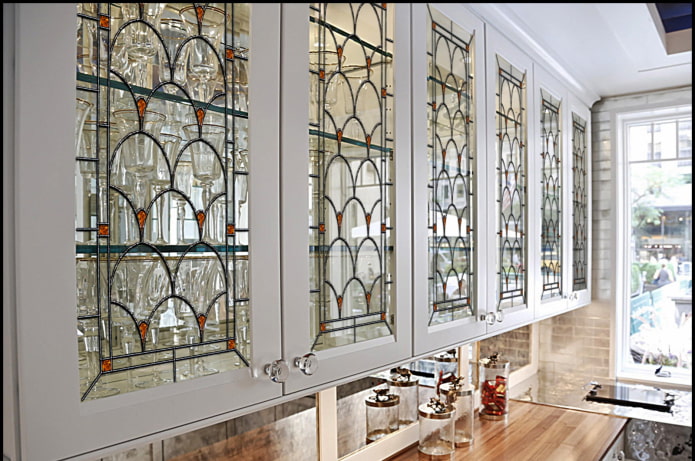
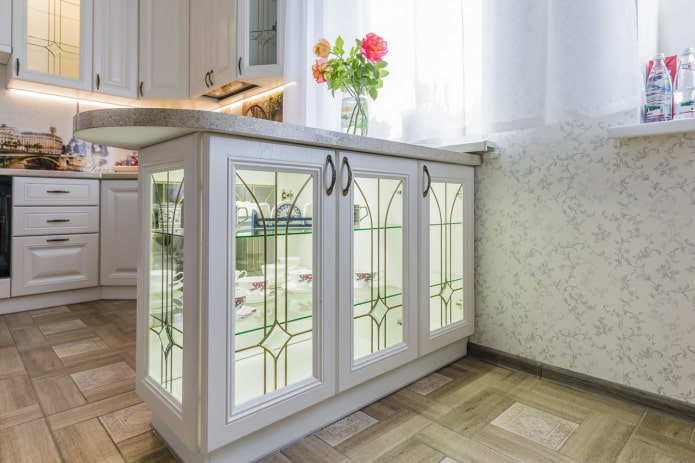
Design options
In addition to factory methods of “pumping” glass facades, there are options that can be made home.
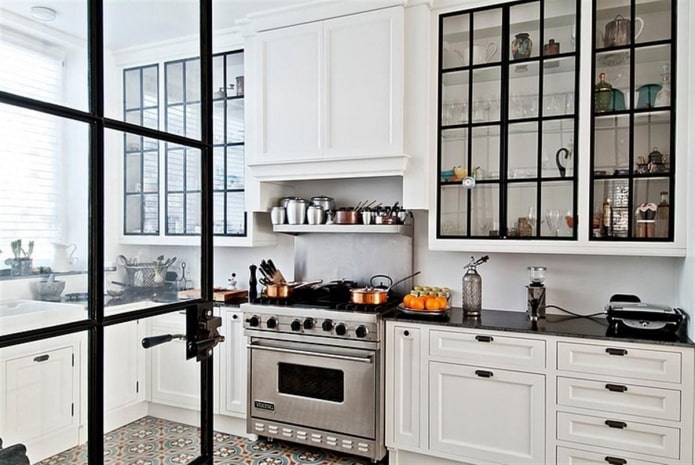
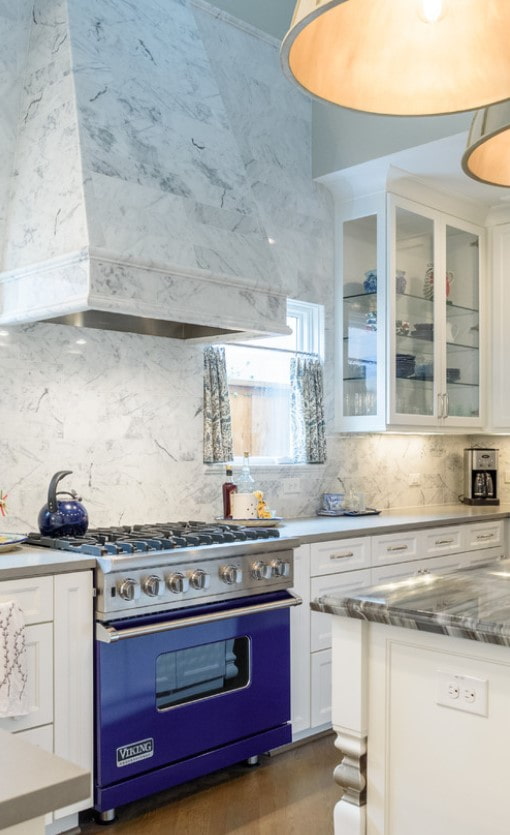
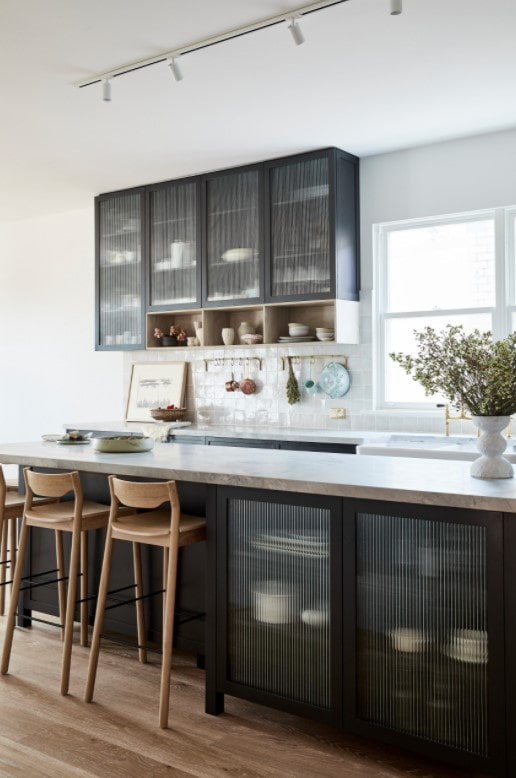
- Lighting. Glass benefits from proper lighting: it will also be easier to find something in the cabinets.
- Painting. Do you have artistic talent? A brush and paints, or glass markers will help you turn ordinary glass doors into works of art.
- Stickers. In December, you can stick snowflakes, in spring – large and small flowers. This way the kitchen will transform along with nature.
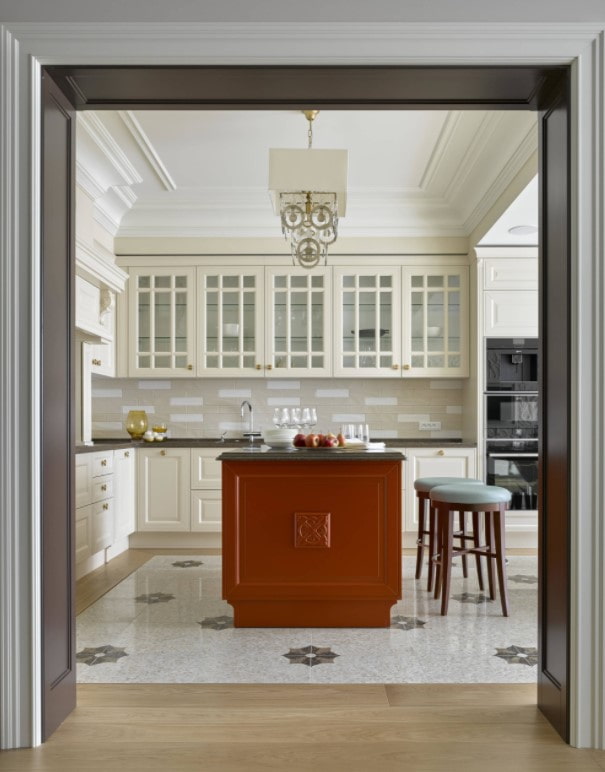
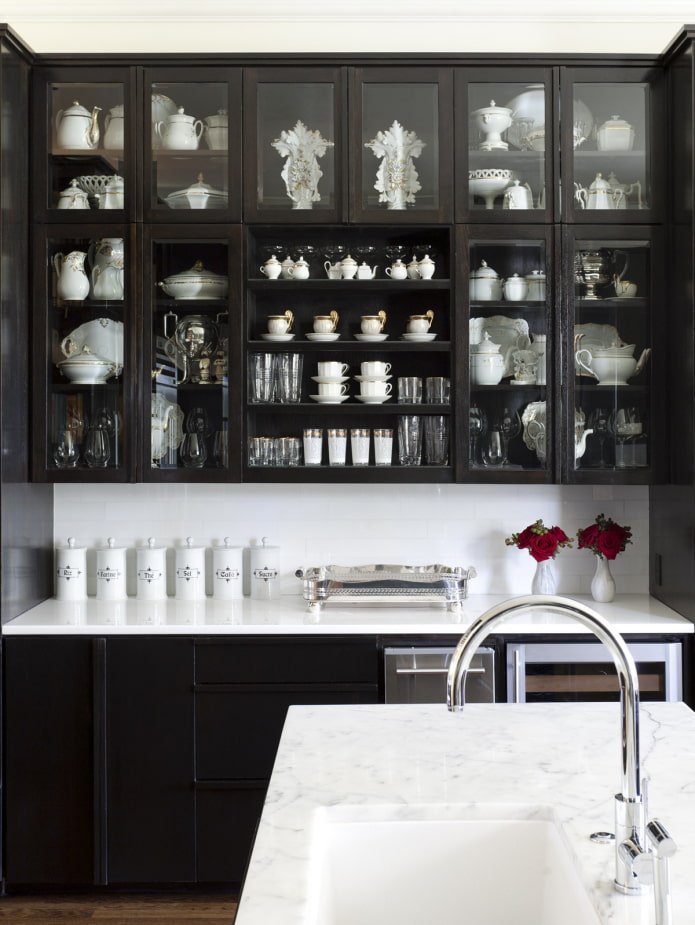
Glass elements are a spectacular way to make the top row of cabinets lighter and more attractive. Use this technique to transform your kitchen!
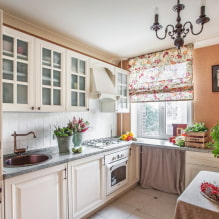
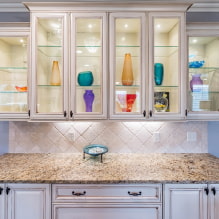

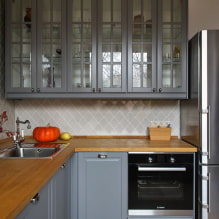
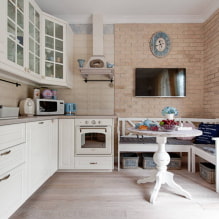

Now reading:
- stylish solutions for hiding a gas pipe in the kitchen without breaking the law.
- Hallway Design: 113 Images for Interior Inspiration
- Light green wallpaper for walls: more than 80 photos in the interior of the living room, kitchen and bedroom
- Gray in the interior: more than 90 photos and examples of interesting solutions.
- Kitchen glass tables: 66 photos, ideas of oval and round shapes with decor.